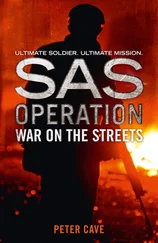“Positive, Kapitan. I have them up and matched. Look.”
One set of sound profiles matched the two Oslos perfectly. The Norsk-class ships were new and Russian boats didn't yet have their individual profiles recorded but instead had signatures of their distinctive-sounding Laval-Ljungstrom gas turbine power plants. The picture had cleared slightly and Scott didn’t like what he saw: a line of Norwegian ASW frigates driving the K-480 toward the K-363.
Scott said, “They’re going to drive us south whether we like it or not, right into the approaches to The Sound. If the Swedes haven't already been alerted, they will be now.”
Abakov took a quick look at the chart. The Sound was in Swedish-Danish waters. “What about the Danes?”
“Their ASW capability is nil, so they'll rely on the Swedes to screen The Sound to prevent a submarine from getting through submerged. They can’t shut it down completely because of all the commercial traffic that passes through.”
Scott saw the look of concern on Abakov’s face and said, “That’s right, we’re about to be painted into a corner.”
“Kapitan, I have contact with numerous targets.”
“Do you have the Akula?” asked Litvanov.
The sonarman slowly nodded. “I think so, a three hundred-hertz tone line, but faint. Masked by the frigates and commercials. Bearing zero-nine-five. Range rate closing, fifty yards a minute.”
“Fire Control. How does that compute?”
“Range under twenty kilometers, sir, perhaps less.”
Litvanov glanced at Zakayev to confirm that his description of how hard it could be to slip through The Sound might yet prove true.
Litvanov had also pointed out the hazards seafarers faced when approaching The Sound. The Russian navigation charts warned of shifting bottom conditions that affected depth, residual danger from old minefields, east-west ferry traffic between Sweden and Denmark, and dangerous setting currents. Veroshilov had also reminded Litvanov of the shallow water in the Kattegat: on average only thirty fathoms, less in the approaches to The Sound.
“We’ll let that nosy bastard come to us and then spring a surprise on him,” Litvanov said.
“You mean torpedo him?” Zakayev said.
“Not unless I have to,” Litvanov said.
“What, then?”
But Litvanov was conferring with his sonarmen.
“Where are those frigates?”
“North, bearing now zero-nine-five.”
“What kind of commercial traffic do you have?”
“Mostly single-screw diesel, Kapitan.” He pointed to the waterfalls of sound crawling down the sonar screens. “Four big ones, probably container ships and ro-ros.” The latter were roll-on/roll-off freighters designed to carry mixed cargoes of cars, trucks, and containers. “Targets are inbound to The Sound and in-line on a track parallel to our own. They all bear due east of Anholt.”
“The weather’s not slowing them down a bit,” Litvanov observed. “A regular freight train. They’re either heading for Hälsingborg or Copenhagen.” Litvanov turned to Zakayev and the girl and grinned. “Too bad we don’t have time for a visit. Copenhagen is a beautiful city.”
He mounted the periscope stand.
“Periscope depth. Let’s see what we have.”
He was right: A freight train of ships partially obscured by rain and mist steamed past the raised periscope like ducks in a shooting gallery. Their green running lights and tiers of white lights strung along their weather decks and top hampers lit them up like a carnival midway. In high magnification and with waves breaking over the scope, Litvanov moved down the train left to right, ticking them off.
“Container ship. Next, a gas hauler.” He saw the letters LNG for liquid natural gas painted on the ship’s side in white letters twenty feet high, and, rising above her main deck, four huge domed containers filled with liquid gas. “Third, a ro-ro. Last, a container ship, big bastard, over a hundred and fifty thousand tons. Down periscope.”
“So, what do we do?” Zakayev said.
“I like that container ship. Maybe we’ll hitch a ride on her into The Sound.”
Captain Bayer was pleased but also a little disappointed with his own performance. The new frigate Kalix, with her green crew, had made contact at long range with one of the two Akulas now due south of their current position near Anholt. He regretted his earlier decision to deploy Trondheim's VDS sonar because it would restrict maneuver in confined waters. Narvik and Norsk had also started hauling in. He wanted the Russians for himself but now he would have to share them.
“We’re in a hurry, Mr. Garborg,” he had said, “but I don't want any casualties.” Garborg appreciated Bayer’s concern for the sailors who had to manhandle the gear on the ship's fantail but felt the pressure all the same. He knew Bayer was pacing the bridge, waiting for confirmation that the tow had been winched aboard.
“Anything new from Kalix?” Bayer asked of Executive Officer Dass.
“She still has a passive contact, sir.”
“Do we have an open channel to Stavanger?”
“Yes, sir. Signals is monitoring it. They’re standing by.”
Bayer had already given the order to change course toward the sonar contact. There was nothing more he could do now but fret. “Sound conditions are very poor,” Bayer said to Dass. “I’m surprised Kalix made contact at all. Surprised even more that she can hold it.”
Bayer looked aft at the floodlit fantail and saw sailors in blue hard hats swarming around the winch. He watched the dripping VDS cable wrap slowly around the take-up spool. It seemed that the retrieval operation would take forever.
“What’s our radar picture, Mr. Dass?” said Bayer, gaze planted aft.
“Four heavies still running south in train, Captain.”
Bayer started pacing again. “Keep an eye on them. We may have to warn them off the area where that damned Akula is operating. They won't like it, but they’ll have no choice.”
“Aye, aye, sir.”
Bayer paced another ten minutes, until he heard Garborg’s report that the sonar body was out of the water. Bayer spun on his heel in mid-stride across the bridge and boomed at Dass. “Both engines ahead full. Set watch condition two.”
“Aye, sir. Ahead full. Call away general quarters.”
Annunciators clinked and answered. The deck shuddered underfoot. The frigate’s bow rose as her screws bit in hard.
“Signals!”
“Aye, sir.”
“Send to Narvik and Norsk: ‘Follow on ASAP, et cetera.’ Send to Kalix: ‘Hold position until we go active on sonar, then break off VDS.’ Mr. Dass.”
“Sir?”
“We’re at the fringe of sonar range, but you may go active in five minutes. And stand by on weapons.”
“I have three pingers, Kapitan.”
“The Norwegians,” Scott said. “They’re drawing a bead on the K-363.”
“What’s to prevent them from drawing it on us?” Abakov said.
“Unless we can stay out of their way, nothing.”
Scott studied the tactical picture. Three Norwegian frigates pinging with active sonar; the K-363 somewhere south of the Norwegians, likely near the approach to The Sound; four merchantmen north of the K-480’s current position, headed for The Sound.
“If we stick our nose in there now, we’re going to get depth-charged by the Norwegians. If we don’t, there’s a good chance Litvanov will get into The Sound before the Norwegians can head him off.”
“Look here, The Sound is only three and a half miles wide,” Abakov said, his face practically on the chart. “Can’t the Swedes be a stopper in the bottle?”
The Sound had two narrow and shallow ship channels. In some places the water was less than ten fathoms deep. On the Danish side of The Sound at Kronborg Pynt, the southbound channel made a sharp dogleg to the left before opening up for the approach to Copenhagen. It reminded Scott of a pair of cattle chutes.
Читать дальше












